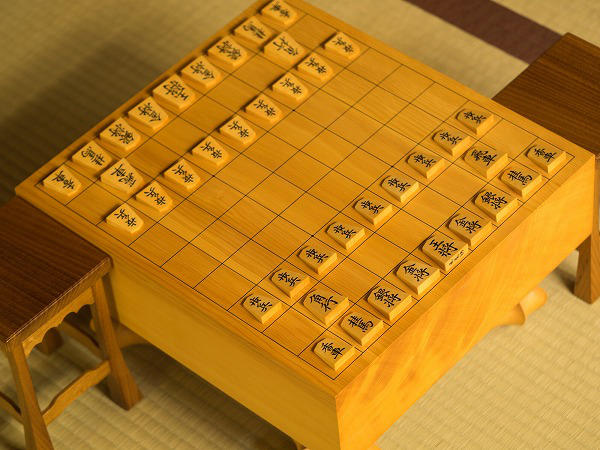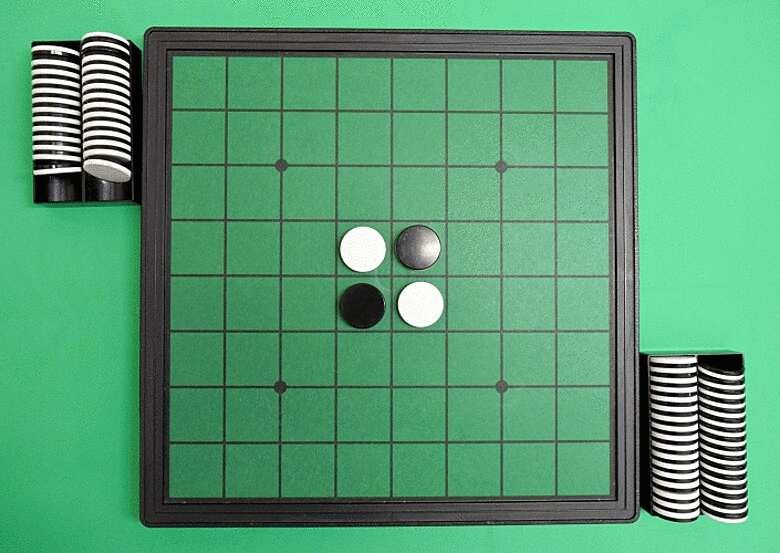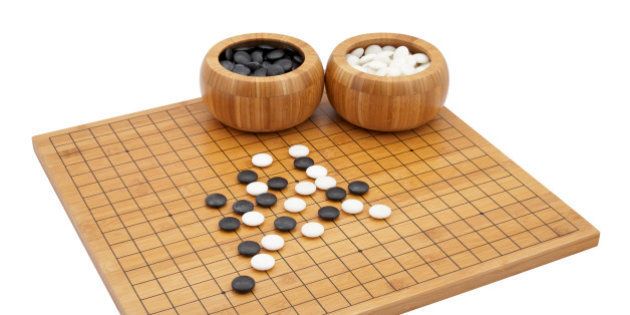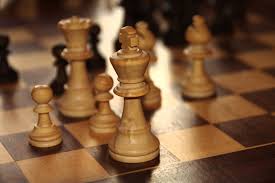

Chess is a board game that is popular all over the world.
The game has simple rules and is easy to start even for beginners.
It is very deep, and there are various tactics and strategies depending on the person.
It’s a game you can enjoy even in your spare time.
That’s chess though
I think most people know about the rules.
Many people seem to have never heard of the detailed terminology.
Here is a brief summary of chess terms.
If you want to get better…
Please make use of this glossary of chess terms.
目次
- 0.1 isolated pawn
- 0.2 united states chess league
- 0.3 United States Chess Federation
- 0.4 Enpassant
- 0.5 illegal move
- 0.6 international master
- 0.7 Woman FIDE Master, Woman International Master, Woman Canda Date Master, Woman Grand Master
- 0.8 etude
- 0.9 Ending/end game
- 0.10 endgame study
- 0.11 opening
- 0.12 open game
- 0.13 Game record
- 0.14 castling
- 0.15 canda date master
- 0.16 gambit
- 0.17 king
- 0.18 Kingside/Queenside
- 0.19 Queen
- 0.20 good bishop
- 0.21 Grand Master
- 0.22 crazy house
- 0.23 close game
- 0.24 cross pin
- 0.25 international chess federation
- 0.26 International Chess Federation title
- 0.27 piece
- 0.28 combination
- 0.29 computer chess
- 0.30 sacrifice
- 0.31 sub center
- 0.32 trigonometry
- 0.33 fixed mark
- 0.34 three fold repetition
- 0.35 Stalemate
- 0.36 Smothered Mate
- 0.37 World Junior Chess Championship
- 0.38 world chess championship
- 0.39 Seventh Rank Rook
- 0.40 semi-open game
- 0.41 Center
- 0.42 All Japan Chess Championship
- 0.43 diagonal
- 0.44 game clock
- 0.45 algebraic expression
- 0.46 touch and move
- 0.47 double pawn
- 0.48 Chess Olympiad
- 0.49 chess rules
- 0.50 chess board/chess board
- 0.51 chess problem
- 0.52 check
- 0.53 Checkmate
- 0.54 communication chess
- 0.55 zugzwank
- 0.56 packed chess
- 0.57 discovered attack
- 0.58 discovered check
- 0.59 draw
- 0.60 Dresden Chess Olympiad
- 0.61 night
- 0.62 Knight’s face direction
- 0.63 Japan Chess Association
- 0.64 bughouse chess
- 0.65 pass pawn
- 0.66 back rank
- 0.67 backward pawn
- 0.68 bad bishop
- 0.69 perpetual check
- 0.70 quick chess
- 0.71 variation
- 0.72 bishop
- 0.73 Hydra (chess)
- 0.74 pin (chess)
- 0.75 File
- 0.76 fixed pawn
- 0.77 fairy chess
- 0.78 fianchetto
- 0.79 Fork (chess)
- 0.80 problem
- 0.81 promotion
- 0.82 irregular chess
- 0.83 pawn
- 0.84 pawn chain
- 0.85 middle game
- 0.86 Mate (checkmate)
- 0.87 rank
- 0.88 rating
- 0.89 Luke
- 1 alphanumeric
- 1.1 CM (Canda Date Master)
- 1.2 ECO
- 1.3 FIDE (International Chess Federation)
- 1.4 FM (FIDE Master)
- 1.5 GM (Grand Master)
- 1.6 IM (International Master)
- 1.7 JCA (Japan Chess Association)
- 1.8 NCS (National Chess Society of Japan)
- 1.9 USCF (United States Chess Federation)
- 1.10 WCM (Woman Canda Date Master)
- 1.11 WIM (Woman International Master)
- 1.12 Chess competition at the 2006 Asian Games
- 1.13 50 move rule
- 2 At the end
isolated pawn
An isolated pawn that is not supported by other pawns.
This can be a strategic weakness, but if used properly it can also be a launching pad for attacks.
What’s interesting is that while it’s a weakness, it can also be seen by some players as a powerful offensive resource.
united states chess league
A league in which professional and amateur chess teams compete in the United States.
It is characterized by team competition, and is contributing to the spread of chess and the improvement of the level of competition.
This league format is appealing because it makes chess a more social activity.
United States Chess Federation
An organization that promotes the spread and development of chess in America. It holds tournaments, ranks players, and promotes chess education.
I believe that chess plays a major role in building a community and fostering a culture of intellectual competition.
Enpassant
A special move that a pawn can take under certain conditions.
It can be taken by passing through an enemy pawn in an adjacent row when it advances two spaces.
Although this rule is complex at first glance, it adds strategic depth to the game.
illegal move
Refers to illegal moves that violate the rules of the game.
Players who make such moves usually end up receiving a penalty.
It also has an educational aspect, teaching us the importance of following the rules.
international master
A title awarded by the International Chess Federation to players with a very high level of chess skill.
The process of aiming for this title is more than just a game, it is also a journey of self-growth.
Woman FIDE Master, Woman International Master, Woman Canda Date Master, Woman Grand Master
A different level of title awarded to female players.
These provide an opportunity for women to be active in the world of chess and showcase their talent.
I think it’s wonderful to have a system like this that celebrates talent and effort, regardless of gender.
etude
This is a study to analyze specific positions in the final stages of chess.
Not only is it directly useful in actual combat, but it also helps train your strategic thinking.
A beautiful etude can feel like a work of art.
sacrifice
Sacrifice is a tactic in chess where a piece is intentionally sacrificed.
The purpose is to gain positional advantage, create attacking opportunities, or obtain long-term strategic benefits.
This tactic, done at the risk of short-term losses, can dramatically change the course of the game.
Sacrifice requires boldness and subtlety, and it’s the beauty of the game.
sub center
Subcenter refers to the squares adjacent to the four main squares (centers) in the center of the chessboard.
Controlling these squares is also important tactically, helping with mid-game positioning and attack preparation.
Subcenter control is a quiet but powerful strategic approach.
trigonometry
Trigonometry is an endgame technique that uses the king to move so that it takes three moves to return to the same square.
The purpose of this is to secure an advantageous position or avoid stalemates by transferring movement rights (turns) to your opponent.
This subtle technique shows a deep understanding of the endgame.
fixed mark
Joki refers to the traditional steps and strategies in chess openings.
These steps have been optimized through years of practice and analysis and are used to secure advantageous positions in the early game.
The study of Joki will solidify the foundation of the game and prepare you for the match.
three fold repetition
Three-fold repetition is a rule where the game ends in a draw if the same position occurs three times.
This situation occurs when neither side can find a way to win and the situation repeats itself.
This rule provides an escape route from a hopeless situation.
Stalemate
A stalemate is a situation where the active player is unable to make a legal move and the king is unchecked, resulting in a draw.
This result is often unexpected and can be a relief for underdog players.
Stalemate is a moment that shows the unpredictability and strategic depth of the game.
Smothered Mate
A smothered mate is a situation in which the king is surrounded by his own pieces, unable to move, and is checkmated by the knight.
This checkmate format is very rare and visually impressive.
This checkmate is a great example of the tactical versatility of chess.
World Junior Chess Championship
The World Junior Chess Championship is an international chess tournament in which young players under the age of 20 compete to be the best in the world.
This tournament plays an important role in discovering and nurturing the talents who will lead the world of chess in the future.
It is a stage where the brilliance of young talent gives us a glimpse of the future of the chess world.
world chess championship
The World Chess Championship is a competition in which the world’s best chess players compete to be crowned champion.
This title is one of the most prestigious in the chess world and is held once every few years.
This tournament is the ultimate chess arena and a chance to write your name in history.
Seventh Rank Rook
Seventh rank rook refers to a tactical position in which a rook reaches the opponent’s seventh rank (or second rank) and targets a pawn.
From this position, the rook can attack the opponent’s pawn structure and gain an advantage in the endgame.
This position maximizes Luke’s potential.
semi-open game
A semi-open game is a type of opening in which White advances with d4 and Black responds with any other move.
These games have a somewhat closed nature compared to open games, and tend to emphasize strategy over tactics.
Semi-open games feature complex battles that require deep planning and advance preparation.
Center
Center refers to the four squares located in the center of the chessboard (d4, d5, e4, e5).
Controlling this area provides tactical and strategic advantages throughout the game.
Domination of the center lays the foundation for superiority in the game.
All Japan Chess Championship
The All Japan Chess Championship is the most prestigious chess tournament in Japan and is hosted by the Japan Chess Federation.
This competition is held annually to determine the best chess players in Japan.
This tournament contributes to the development and spread of chess culture in Japan.
diagonal
Diagonal refers to the diagonal rows on the chessboard, specifically the path along which the bishop moves.
Bishops can move any distance along the diagonal and use this property to control strategically important positions.
Diagonal control can have a powerful influence on the board.
game clock
A game clock is a clock used to measure each player’s consideration time in a chess game.
There are two clocks, and when one player makes a move, that player’s clock stops and the other player’s clock starts running.
Time management is another important aspect of chess and an element that adds pressure.
algebraic expression
Algebraic chess notation is a modern way to record chess moves, concisely representing each piece’s movement.
The type of piece and destination square are indicated with letters and numbers, making it easy to analyze and share the game.
This method is an efficient way to easily track your progress in the game.
touch and move
The touch-and-move principle states that if a player intentionally touches a piece, he or she must move that piece.
However, only if legal movement is possible.
This rule prevents misunderstandings caused by unintentional touching of pieces.
double pawn
Double pawn refers to two pawns side by side on the same file, typically resulting in a tactical disadvantage.
This is because the structure of the pawn is weakened, reducing your ability to control its files.
The presence of double pawns requires strategic planning.
Chess Olympiad
The Chess Olympiad is an international chess tournament in which teams from all over the world participate.
This competition aims to promote international friendship and understanding as well as chess skills.
This event demonstrates the true global appeal of chess.
chess rules
The rules of chess define the objectives of the game, the movement of pieces, special procedures (castling, enpassant, promotion), and the end of the game (checkmate, stalemate, draw).
Understanding the rules is the starting point for exploring strategic depth.
chess board/chess board
A chess board is a game playing area made up of 8×8 squares.
It features alternating light and dark squares and becomes the battlefield of the game.
This board is a strategic arena with endless possibilities.
chess problem
A chess problem is a puzzle to achieve checkmate under certain rules and conditions.
Similar to endgame studies, it explores a specific theme or purpose.
These not only test your chess knowledge but also stimulate your creativity.
check
A check refers to a state in which the opponent’s king is attacked, and you must either move that king or prevent the check on your next turn.
Checks bring tension and dynamism to the game.
Checkmate
Checkmate is a state in which the opponent’s king cannot escape from the attack and the winning conditions of the game are met.
This is the ultimate goal of chess.
Achieving checkmate is a testament to a good combination of tactics and strategy.
communication chess
Correspondence chess is a form of chess played between remote players via letters, emails, or a dedicated platform.
Deep analysis is possible because there is no time limit for thinking.
This format requires extreme tactics and patience.
zugzwank
Zugzwank refers to a situation in which a player is unable to make an advantageous move and worsens his position no matter which move he chooses.
This concept teaches you the delicate balance of position and tactical delicacy.
packed chess
Chess chess is a chess problem in which the goal is to checkmate the opponent’s king under certain conditions.
As with endgame studies, solutions require tactical insight.
This challenge embodies the elegance and logical beauty of chess.
discovered attack
A discovered attack is a tactic in which moving one piece causes another piece to enter the line of attack.
This technique can create an unexpected dual threat to your opponent.
This tactic has the power to change the dynamics on the board in an instant.
discovered check
A discovered check is a technique in which one piece moves to reveal a check by another piece.
This move often creates powerful attack opportunities.
This technique shows the perfect combination of chess calculations and creativity.
draw
A draw occurs when one of several conditions are met for a chess game to end in a draw.
These include stalemate, isomorphic trifecta, and the impossibility of winning due to insufficient piece material.
The draw shows the complexity and depth of the game.
Dresden Chess Olympiad
The Dresden Chess Olympiad is an example of a chess Olympiad held in Dresden in a particular year.
The tournament is a place for teams from all over the world to compete and develop not only chess skills but also international friendship and understanding.
This event is a great example of how chess connects the world.
bughouse chess
Baghouse Chess is a modified form of chess played by four players divided into two teams.
You work together with your partner and pass the pieces you captured to your partner, who can then use them on their own board.
This game relies on quick communication and strategy, and features highly dynamic and unpredictable developments.
This is an interesting variation that shows creativity that goes beyond the boundaries of chess.
pass pawn
A passing pawn is a pawn that has no enemy pawns in its path and can advance unhindered.
Passpawn is of great strategic value and should be properly protected and promoted.
This pawn is like a little soldier with big dreams.
back rank
Backrank refers to the row closest to each player on the chessboard and is where a player’s king and other important pieces are placed at the start of the game.
Exploiting the weaknesses of the back ranks is often a game-defining strategy.
This line can be the battleground that determines the fate of the game.
backward pawn
A backward pawn is a pawn that cannot advance or is difficult to defend because it does not have the support of its own pawn chain.
They are usually easy targets for attack and can pose a tactical disadvantage.
This pawn is like a lone soldier in a team.
bad bishop
A bad bishop is an inactive bishop whose movements are restricted by his pawns.
These bishops often miss the opportunity to play an important role in the development of the game.
It is an interesting phenomenon that strategic placement can sometimes limit the power of the bishop.
perpetual check
Perpetual checking is a tactic in which one player repeatedly checks the opponent’s king to bring the game to a draw.
This is sometimes used as a means to avoid defeat.
A clever way to save a game, sometimes resulting in dramatic changes.
quick chess
Rapid chess is a form of chess played over short periods of time, forcing players to think quickly and make immediate decisions.
This format tests your reflexes and on-the-spot strategizing abilities.
It’s an exciting game format where speed brings a new level of challenge.
variation
Variations refer to different steps or strategic choices in the opening, middle game, and end game of chess.
It means that many possibilities can be derived from one position, indicating the richness and complexity of the game.
This is an element that gives you a sense of the depth and breadth of possibilities in chess.
bishop
A bishop is a chess piece that can move diagonally any number of squares.
Bishops are especially powerful on open boards and have the ability to attack enemies from long range.
This piece is like a sniper, with great impact even from a distance.
Hydra (chess)
Hydras are fictional pieces found in certain irregular chess games and problems, and may have specific rules and abilities.
This term symbolizes imagination in chess variations and creative problem setting.
It’s an interesting concept that shows the range of creativity in the world of chess.
pin (chess)
Pinning is a tactic in which one piece pins another piece on the attack line.
A fixed piece cannot be moved because if it moves, a piece with higher value will be attacked.
This tactic is a way to tie down your opponent and secure a strategic advantage.
File
File refers to the columns running vertically across the chessboard.
Playing an important role in piece placement and tactics, controlling the file is a means of applying pressure on your opponent.
It is an important strategic element when aiming for control on the board.
fixed pawn
A fixed pawn is a pawn that cannot advance due to enemy pawns or pieces.
These are easy targets for attack and can create strategic weaknesses.
Fixed pawns are immobilized and expose tactical vulnerabilities.
fairy chess
Fairy chess is a type of irregular chess that changes the rules and pieces of standard chess.
New pieces, moves, and objectives may be introduced, adding new dimensions to the game.
It is a format full of playfulness and creativity that goes beyond the framework of chess.
fianchetto
Fianchetto is a tactic in which the bishop is placed diagonally between two of your pawns.
This allows the bishop to easily dominate the board over long distances.
This placement is a clever way to maximize the Bishop’s power.
Fork (chess)
A fork is a tactic in which one piece attacks multiple enemy pieces at the same time.
Particularly famous is the knight’s fork, which uses its special movement to threaten important pieces at the same time.
This tactic puts a lot of pressure on your opponent and can lead to an exchange of pieces or establishing an advantage.
The strength to defeat the enemy in one fell swoop is appealing.
problem
Chess problems are puzzles whose goal is checkmate under specific conditions.
These usually require finding a solution within a certain number of moves, stimulating logical thinking and creativity.
Problems can be based on any aspect of the opening, middle game, or end game.
It is a format that encapsulates the beauty and complexity of chess.
promotion
Refers to the process of pawn promotion (becoming) that can occur when a pawn reaches the final row on the opposite side of the chessboard.
Promotions allow pawns to turn into queens, rooks, bishops, or knights, which have a significant impact on how the game unfolds.
This moment shows how a mere pawn can have game-changing power.
irregular chess
Irregular chess is a variation of chess that changes the rules of standard chess or introduces new pieces or strategies.
This includes things like Bughouse Chess and Fairy Chess. Irregular Chess provides players with new challenges and fun, and encourages creativity.
It’s an interesting way to explore the endless possibilities of chess.
pawn
Pawns are the most numerous pieces in a chess game, and their basic move is to move forward one square, but only in the first move can they move forward two squares.
You can also capture enemy pieces diagonally in front of you. The strategic value of pawns is deeper than their simple movement suggests, and they play a key role in many important aspects of the game.
It is a profound existence where small pieces often play a big role.
pawn chain
A pawn chain is a chess arrangement in which multiple pawns support each other in diagonal succession.
This shape helps pawns support each other’s progress and control specific files and diagonals.
Pawn chains form a strong defensive structure and can also serve as a starting point for attacks.
However, if the base of the chain is attacked, there is also a risk that the entire chain will collapse.
A pawn chain is like a symbol of a bond on a chess board, a beautiful yet fragile combination.
middle game
The middle game is the stage in a chess game after the opening steps are completed and before moving on to the endgame.
In this phase, players have already established their positions on the board and aim to activate their pieces, ensure the safety of their kings, and execute plans of attack on their opponents.
The middle game is a complex phase where strategy and tactics merge, and it is an important stage that greatly influences the outcome of the game.
The middle game embodies the essence of chess and is the core part of the game that requires creativity and deep calculation.
Mate (checkmate)
Checkmate is a state in which the opponent’s king cannot escape from the attack and the winning conditions of the game are met.
Players progress through the game with the ultimate goal of checkmateing their opponent’s king.
Achieving a checkmate means breaking through your opponent’s defenses and using your tactical acumen to emerge victorious.
Checkmate is the ultimate goal in chess, and the moment provides the player with the greatest sense of accomplishment.
alphanumeric
CM (Canda Date Master)
CM, or Canda Date Master, is one of the chess titles awarded by the International Chess Federation (FIDE).
This title is given to amateur players whose chess skills have reached a certain standard.
Winning a CM indicates that a player has achieved a certain level of success at international level and represents the first step towards further progress and growth.
The title of CM is a major accomplishment for a chess player and a strong motivation to aim for even greater heights.
ECO
ECO (Encyclopedia of Chess Openings) is an encyclopedia that systematically categorizes chess openings.
Openings are coded with a combination of letters and numbers, and a wide range of opening strategies and variations are described.
ECO is an important resource for players as they learn opening theory and is essential for research and preparation.
ECO is like a compass for navigating the ocean of chess openings.
FIDE (International Chess Federation)
FIDE is the abbreviation for International Chess Federation, the world governing body for chess.
FIDE aims to organize international chess tournaments, manage player rating systems, and popularize and develop chess.
We also award various official titles to players.
FIDE plays a central role in bonding the chess community and promoting this classic game around the world.
FM (FIDE Master)
FM, or FIDE Master, is a chess title awarded by FIDE that certifies intermediate-level proficiency as a professional chess player.
Winning the FM title signifies recognition of a player’s ability and talent in the international chess community, and serves as a stepping stone to challenge for even higher titles.
The FM title is a glorious achievement for a chess player and honors their hard work and dedication.
GM (Grand Master)
GM, or Grandmaster, is the highest title in chess and is awarded by FIDE.
This title is given only to the world’s best chess players and recognizes outstanding skill, achievement and contribution.
Becoming a GM is the ultimate honor that many chess players aspire to and represents the highest level of success in the field.
The title of Grandmaster is one of the most respected and coveted positions in the world of chess.
IM (International Master)
IM, or International Master, is an international chess title awarded by FIDE and is one level below Grandmaster.
This title is given to a player with a very high level of chess skill and performance.
The IM title is a recognition of a player’s ability in the global chess community and is an important step toward becoming a Grandmaster.
The title of International Master is a very important milestone in the career of a chess player.
JCA (Japan Chess Association)
The Japan Chess Association (JCA) is the main organization promoting the spread and development of chess in Japan.
We support holding tournaments, training players, and participating in domestic and international chess events.
The JCA works to unite the Japanese chess community and raise the profile of the game internationally.
The efforts of the Japan Chess Association provide a great opportunity to expand the horizons of chess in Japan and bring this intellectual game to a wider audience.
NCS (National Chess Society of Japan)
The National Chess Society of Japan (NCS) is another important organization that aims to popularize and improve the level of chess in Japan.
NCS holds domestic chess events, provides programs to improve the level of players, and supports the Japanese national team at international tournaments.
The activities of NCS are contributing to the establishment and growth of chess culture in Japan, and play an important role in spreading the appeal of the game.
USCF (United States Chess Federation)
The United States Chess Federation (USCF) is the governing body for chess in the United States, managing player ratings, holding national tournaments, and promoting chess education.
USCF leads educational and competitive chess initiatives in the United States.
Through USCF’s efforts, chess has become increasingly popular in the United States and enjoyed by all age groups.
WCM (Woman Canda Date Master)
Woman Canda Date Master (WCM) is a title for female chess players awarded by the International Chess Federation (FIDE).
This title is given to female players who meet certain criteria and recognizes their accomplishments and talent in chess.
The WCM title is an important achievement for female chess players and a strong motivation to aim for greater heights.
At the end
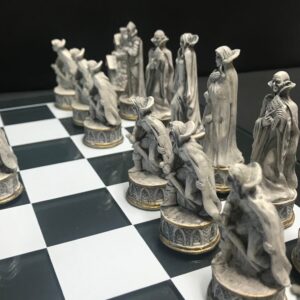
How did you like the chess glossary?
Chess is a very entertaining game that everyone from children to the elderly can enjoy without any handicap.
You can enjoy concentration, patience, ability to see ahead, and bargaining with opponents.
If you watch this, please fall in love with the charm of chess.
I’m sure your life will be richer than it is now!
